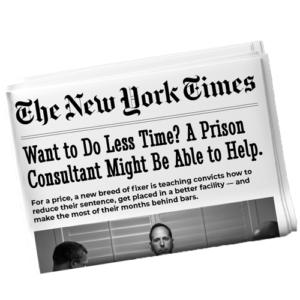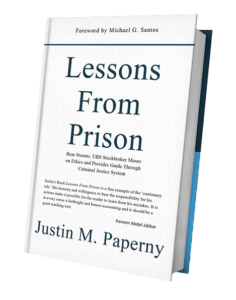Recently, a friend and client who will soon surrender to Lewisburg Federal Prison Camp texted me, “I know we have done this, but can we go over, one more time, the basic structure of a day in federal prison?”
“Of course!”
Following our call, I thought I would write it up, then post as a blog.
To be clear, the goal of this blog is share the basic structure of a day in federal prison. How YOU structure your day is a totally different question. For example, you can read this blog that discusses MY mornings in federal prison.
To the basic structure of a day in federal prison, the compound usually opens at 6:00 a.m. Provided there isn’t any fog, people are free to leave the housing units and go to the chow hall for breakfast, use the telephones or email, go to the gym or recreation yard.
On weekdays, most daytime work details begin at 7:30 in the morning. Prisoners go to their work details or various callout appointments. Those who miss the work call or callout may receive an incident report for being out of bounds.
At 8:00 a.m., the shift changes for many staff members. Officers walk through the housing units to ensure that the orderlies are performing their work, that beds are made, and that no one who is supposed to be working is loitering around the unit.
Camps have “open movement,” meaning people may walk around freely. In secure institutions, some form of controlled movement exists.
With controlled movement, people need to wait for a specific time, or get a pass, to move from one area of the compound to another. It’s like a pass that children in primary school use when they want to leave the classroom to go to the library or bathroom. Ordinarily, officers begin issuing passes after their 8:00 a.m. rounds in the housing units.
In medium and high-security prisons, the controlled movement procedures are substantially more rigid. Passes only authorize a person to move from one specific place to another. For example, a pass may allow a person to move from the housing unit to the library. The window of time to get from one area to the other may be ten minutes, and they may only be authorized to make the move on the hour or on the half-hour.
Most institutions have a “yard recall” at various times each day. During yard recall, all people return to their assigned areas.
At 11:00 a.m., different segments of the federal prison will be released to the chow hall for the noon meal.
People assigned to work details eat first, and they usually have a 30- to 45-minute window before they report back to work details. Detail supervisors will take a roll call at both 7:30 and after the men return from lunch. Spontaneous roll calls also take place throughout the day. Some staff make a real effort to catch prisoners out of bounds. They take disciplinary action against those who not in their assigned area.
By 1:00 p.m. most chow halls close. As long as the men are not working, they may use the library facility, the recreation facility, or walk around the recreation yard. In institutions with open movement, prisoners may walk around freely at any time except count times and when the facility is locked down.
Around 3:30 in the afternoon, most institutions have a recall, requiring people to return to assigned quarters or work details.
There will be a staff shift change and a count. When the count clears, officers distribute mail in the housing units. After mail call, the units will be released for the evening meal.
After the evening meal, most people in the prison have a modicum of free time, depending upon security level. After 8:00 pm, prisons tend to shut down, requiring the people to stay in the housing unit. They may watch television and use the telephone or email system.
Basically, people in federal prison schedule their lives around times that the institution sets for them.
Justin Paperny




